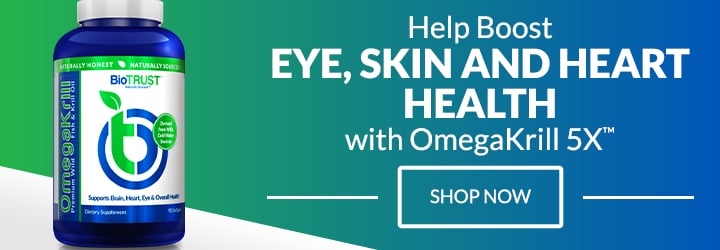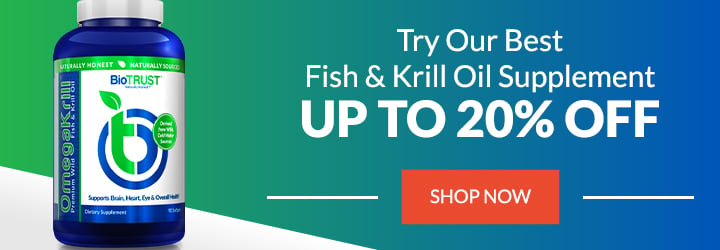What Are Omega-6 Fatty Acids? (and 26 places they’re hiding)

You’ve heard about omega-3s. You know they’re important. You’ve heard time and again that you should be eating fatty fish like salmon, and you also probably know it’s a good idea to supplement with a high-quality fish oil. But what about omega-6 fats? Do you need them too? What do they do? Are you getting enough in your diet? Or, are you getting too much of them? And if so, what consequences can they have on you and your body?
“Knowing is not enough; we must apply. Willing is not enough; we must do.”
– Johann Wolfgang von Goethe
Just like the well-known omega-3s, omega-6s are vitamin-like essential fatty acids. That is, your body needs them yet cannot produce them on its own. So, you must get them through your diet—through food, supplementation, or a combination of the two.
While omega-6 fatty acids are indeed important, a deficiency is nearly impossible, as you’ll get more than enough of these essential fats when you consume a diet rich in minimally-processed, nutrient-dense plant-based foods, particularly nuts and seeds.
Thanks to dietary changes over the last several decades, most people are drastically overconsuming omega-6 fatty acids, which is typically found in foods (as linoleic acid), and this shift has been attributed to many health issues.
You see, experts estimate that throughout human history, the optimal ratio for consumption of omega-6 to omega-3 fatty acids (e.g., alpha-linolenic acid) has been roughly 1:1 to 4:1. With the contemporary diet, this ratio has shifted dramatically in favor of omega-6 fatty acids, ranging from 10:1 to 20:1 or even higher. 1
This is important for multiple reasons.
For starters, omega-6 and omega-3 fatty acids are precursors to hormone-like substances called eicosanoids, which are signaling molecules that have important roles in the regulation of inflammation. In general, eicosanoids derived from omega-6 fatty acids are proinflammatory while eicosanoids derived from omega-3s are anti-inflammatory. 2
Another reason this heavy imbalance is so concerning is omega-6s and omega-3s compete with one another. For instance, linoleic acid (omega-6) competes with alpha-linolenic acid (omega-3) for the enzymes (e.g., fatty acid desaturase 1, FADS1, and FADS2) needed to convert these essential fatty acids into biologically-active longer-chain fatty acids.
Linoleic acid (LA) is metabolized to arachidonic acid (AA) while alpha-linolenic acid (ALA) is metabolized to eicosapentaenoic acid (EPA) and docosahexaenoic acid (DHA). Most people are aware that the conversion rate of ALA to EPA and DHA is, on average, pretty poor. (This is one reason it’s a good idea to eat fatty fish and supplement with fish, krill, and/or algae oils.) However, many people don’t realize this poor conversion rate can be attributed, at least in part, to a relatively high intake of omega-6 fatty acids.
Of course, there are other factors that influence the conversion of ALA to EPA and DHA. For instance, women (particularly of child-bearing age) may have a significantly higher conversion rate, and genetic variation (e.g., FADS haplotype D) is associated with an enhanced ability to generate AA and EPA from LA and ALA, respectively. It’s also possible that enzymatic capacity to convert ALA to EPA and DHA may decrease with age and may also be limited in premature infants, hypertensive individuals, and some type 2 diabetics. 3
Again, this competition is relevant because these omega-6 and omega-3 fatty acids have important opposing physiological effects. In addition to being proinflammatory, omega-6s are also prothrombotic, which means they promote blood clotting. In other words, a diet rich in omega-6 fats shifts the body toward a proinflammatory, prothrombotic, and proaggregatory state. And when the balance swings wildly in favor of omega-6s, it leads to increases in vasospasm, vasoconstriction, and blood viscosity. 2,3
What’s more, these essential fatty acids play an important role in the composition of all cell membranes where they influence membrane fluidity, which regulates cell signaling processes, cellular functions, and gene expression. Along these lines, omega-6 fats compete with omega-3 fats for “parking spots” within the membranes of all cells, especially platelets, erythrocytes, neutrophils, monocytes, and liver cells. 4
As an example, omega-6 fats lead to relatively increased cell membrane permeability, which leads to increased fat storage. On the other hand, omega-3 fatty acids reduce fat storage by suppressing fat-storing enzymes and subsequently increasing fat burning (i.e., β-oxidation).
Why does all this matter?
Researchers associate excessive intake of omega-6 fatty acids with an increase in virtually all inflammation-related conditions including cardiovascular disease, diabetes, obesity, metabolic syndrome, irritable bowel syndrome, inflammatory bowel disease, rheumatoid arthritis, asthma, mood disorders, mental illness, autoimmune disease, accelerated aging, and more. 2,,5,6
Why Are We So Out of Balance?
While there are multiple explanations for this heavy imbalance of omega fatty acids—including a decrease in omega-3 fatty acid consumption from freshwater fish—researchers attribute unhealthy and excessive omega-6 intake to agribusiness and modern agriculture. More specifically, we can point the finger at refined vegetable and seed oils high in omega-6 fatty acids, which are ubiquitous in the Western diet. 7

In particular, researchers estimate that the average person’s consumption of soybean oil increased more than 1000-fold from the early 1900s to the beginning of the 21st century. 7
Of course, you’re not entirely to blame for the increase in omega-6 fatty acid consumption. In fact, advice to substitute industrial vegetable oils rich in these polyunsaturated fatty acids for animal fats high in saturated fatty acids has been a cornerstone of worldwide dietary guidelines for the past half century. 8 A good example is the long-standing recommendation to substitute margarine (laced with omega-6-rich vegetables oils) for butter.
However, in the Sydney Diet Heart Study, a group of researchers from the National Institutes of Health found that this advice is heavily misguided, and they concluded that “substituting dietary linoleic acid in place of saturated fats increased the rates of death from all causes, coronary heart disease, and cardiovascular disease.” 9
Another particularly important finding of this study was that substituting omega-6 fats for saturated fats did decrease blood cholesterol levels. However, that decrease in cholesterol resulted in no evidence of cardiovascular benefit. In fact, it led to the opposite effect: an increase in cardiovascular disease and coronary heart disease.
Overall, a more balanced intake of omega-6 to omega-3s lowers the incidence of virtually all the aforementioned conditions, including cardiovascular disease, pro-inflammatory disease, neurodegenerative diseases, obesity, diabetes, metabolic syndrome, mood disorders, rheumatoid arthritis, asthma, inflammatory bowel disease, psoriasis, and more. 2,310,11
Top Foods Where Omega-6 Fatty Acids are Hiding
While steering clear of the above vegetable oils—don’t intentionally use them, and certainly, don’t cook with them—is a great start to reducing your intake of omega-6s, the unfortunate reality is that these cheap, refined, bleached, and deodorized vegetable oils are “hidden” in virtually every processed, packaged food you’ll pick up off the shelf.
Here are some of the “foods” where they’re hidden as well as some of the other most commonly consumed omega-6-rich foods.
- Mayonnaise
- Grapeseed oil
- Margarine
- Fast food
- Popcorn
- Restaurant food
- Salad dressing
- Rice bran oil
- Potato chips
- Granola
- Shortening
- Baked goods
- Peanut butter
- Breads
- Tortilla chips
- Sauces
It’s not just vegetable oils and processed foods that contribute to excessive omega-6 intake. Consumption of animals fed diets rich in omega-6-rich seeds (e.g., soy, corn) also plays an important role. 7
For example, meat from grain-fed animals has a considerably higher omega-6/omega-3 ratio than grass-fed meat. Meanwhile, farm-raised fish have a higher concentration of omega-6s (along with a lower percentage of omega-3s), and eggs from pasture-raised hens have a healthier balance of omega fatty acids compared to conventional eggs.
Get Your Omega-6 Fatty Acids in Balance
While omega-6 fatty acids are indeed important, a deficiency is nearly impossible, as you’ll get more than enough of these essential fats when you consume a diet rich in minimally-processed, nutrient-dense whole foods. Virtually everyone needs to make a conscious effort to reduce their consumption of omega-6s, while also increasing omega-3s, to support healthy levels of inflammation, cellular health, and overall health. You can swing the omega balance in your favor by eliminating vegetable oils and processed foods made with them. Here’s to your balancing act!







